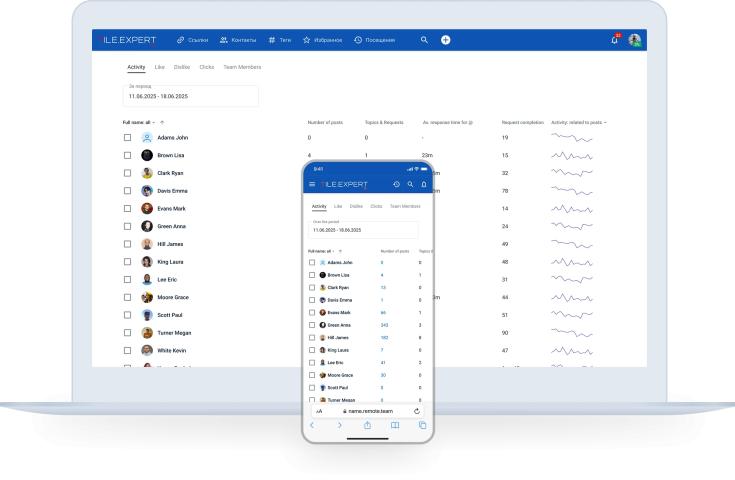In the digital marketing world, lead generation is one
of the most crucial elements for businesses looking to grow and succeed.
However, lead generation is not a one-size-fits-all process. It requires
careful planning, strategizing, and the implementation of techniques that
enhance the conversion process. One such technique is micro conversion
mapping.
In this blog, we will explore how
micro
conversion mapping techniques can be utilized to maximize lead generation
efforts and boost your overall sales performance. We’ll dive into what micro
conversions are, how to map them effectively, and how they can help you
maximize your business's lead generation potential.
What Are Micro Conversions?
Before we dive into mapping
techniques, it's essential to understand what micro conversions are. In the
context of lead generation, micro conversions are smaller, incremental
actions that potential leads take on their journey toward becoming a full
conversion (a paying customer). These actions may seem insignificant in
isolation but are critical indicators of engagement, interest, and intent.
Examples of micro conversions
include:
- Signing up for a newsletter.
- Clicking on a call-to-action (CTA) button.
- Downloading a free resource (like an ebook,
whitepaper, or guide).
- Watching a product demo video.
- Adding items to a shopping cart (but not completing
the purchase).
- Filling out a contact form.
Each of these steps is a signal
that a user is moving closer to making a purchase or completing a larger, more
significant conversion. Tracking and optimizing these micro conversions can
provide invaluable insights into how users interact with your website and can
lead to more successful lead generation strategies.
The Importance of Micro
Conversion Mapping
Micro conversion mapping refers
to the process of identifying and tracking these small yet crucial actions
across the user journey. The idea behind micro conversion mapping is that by
understanding where and how users interact with your website, you can optimize
the flow of engagement, ultimately leading to higher conversion rates.
Why is this important?
- Better Insights into User Behavior: By
tracking micro conversions, businesses can gain a better understanding of
where users drop off in the conversion funnel and what triggers them to
move to the next stage.
- Improved Targeting: Understanding which
actions lead to higher conversion rates enables businesses to tailor their
marketing strategies to nurture leads effectively at each stage of their
journey.
- Optimized Lead Nurturing: Not every visitor
is ready to make a purchase right away. Micro conversions allow you to
identify potential leads at different stages of the funnel and nurture
them with personalized content, offers, or communications that encourage
further action.
- Increased ROI: By focusing on micro
conversions, businesses can maximize their return on investment (ROI) from
existing traffic. Rather than relying solely on high-ticket conversions,
you can optimize for smaller, incremental actions that ultimately lead to
bigger results.
How to Implement Micro
Conversion Mapping Techniques
Now that we understand the
importance of micro conversions, let’s explore how to implement effective
mapping techniques to boost lead generation.
1. Identify Key Micro
Conversion Points
The first step in micro
conversion mapping is identifying the key micro conversion points within your
website or landing pages. Some of the most common places where users take micro
conversions include:
- Landing Pages: Are users filling out forms?
Are they downloading lead magnets? These actions are essential signals of
engagement.
- Navigation: Are users clicking on key links?
Are they exploring product pages or services?
- Product Pages: Are visitors adding products
to their cart or viewing more detailed product descriptions?
Identifying these
micro-conversion actions is the foundation of mapping, as it will help you know
where you need to focus your attention and what specific actions to track.
2. Set Up Tracking Tools
To effectively map micro
conversions, you’ll need tools to track these smaller actions. Popular tools
for tracking micro conversions include:
- Google Analytics: By setting up event
tracking in Google Analytics, you can monitor various actions like form
submissions, CTA button clicks, or downloads.
- Heatmap Tools: Tools like Hotjar or Crazy
Egg provide heatmaps and session recordings, helping you see where
visitors click, scroll, and spend the most time.
- CRM and Marketing Automation Platforms:
Tools like HubSpot, Marketo, or Salesforce can help
you monitor lead progression through email opens, website interactions,
and other triggers.
3. Optimize for Each Stage of
the Buyer Journey
Micro conversions occur at
various points throughout the buyer journey. Understanding where these actions
occur helps you tailor content and messaging to meet your audience at each
stage.
- Awareness Stage: During this stage, your
focus should be on gathering awareness. Encourage micro conversions such
as subscribing to a newsletter or following you on social media.
- Consideration Stage: Here, potential leads
are considering your product or service. Offer content like case studies,
webinars, or demos that encourage users to download a free resource or
request more information.
- Decision Stage: Leads in this stage are
close to making a purchase decision. Encourage them to add products to
their cart, fill out a quote request form, or schedule a call with a sales
representative.
Each stage should have
micro-conversion actions that guide users closer to a full conversion.
4. Personalize User
Interactions
Personalizing the experience for
your leads can significantly enhance micro conversions. By tracking and
segmenting users based on their behaviors, you can serve them more relevant
content or offers.
For example, if a user downloads
an ebook on a particular subject, you can follow up with a personalized email
offering more advanced resources related to that topic. Personalized
interactions keep users engaged and increase the likelihood of them completing
a larger conversion.
5. A/B Testing and
Optimization
Constant testing and optimization are key when working with micro conversions. Through A/B testing, you can test different CTA button >
Small changes, such as adjusting
button colors, wording, or position, can have a significant impact on
conversion rates. Continuously optimizing based on data will help you maximize
the effectiveness of your lead generation strategy.
6. Measure and Analyze Results
Once you’ve implemented your
micro-conversion mapping strategy, regularly assess the results. Use tools like
Google Analytics, Hotjar, or your CRM platform to track the
effectiveness of your micro conversion points and make necessary adjustments.
Review key metrics like:
- Conversion rate of micro actions (form submissions,
downloads, etc.)
- Bounce rate (how many users leave without taking
any action)
- Average session duration (how long users are
interacting with your content)
By analyzing these results, you
can make informed decisions on which areas to optimize further to enhance lead
generation.




